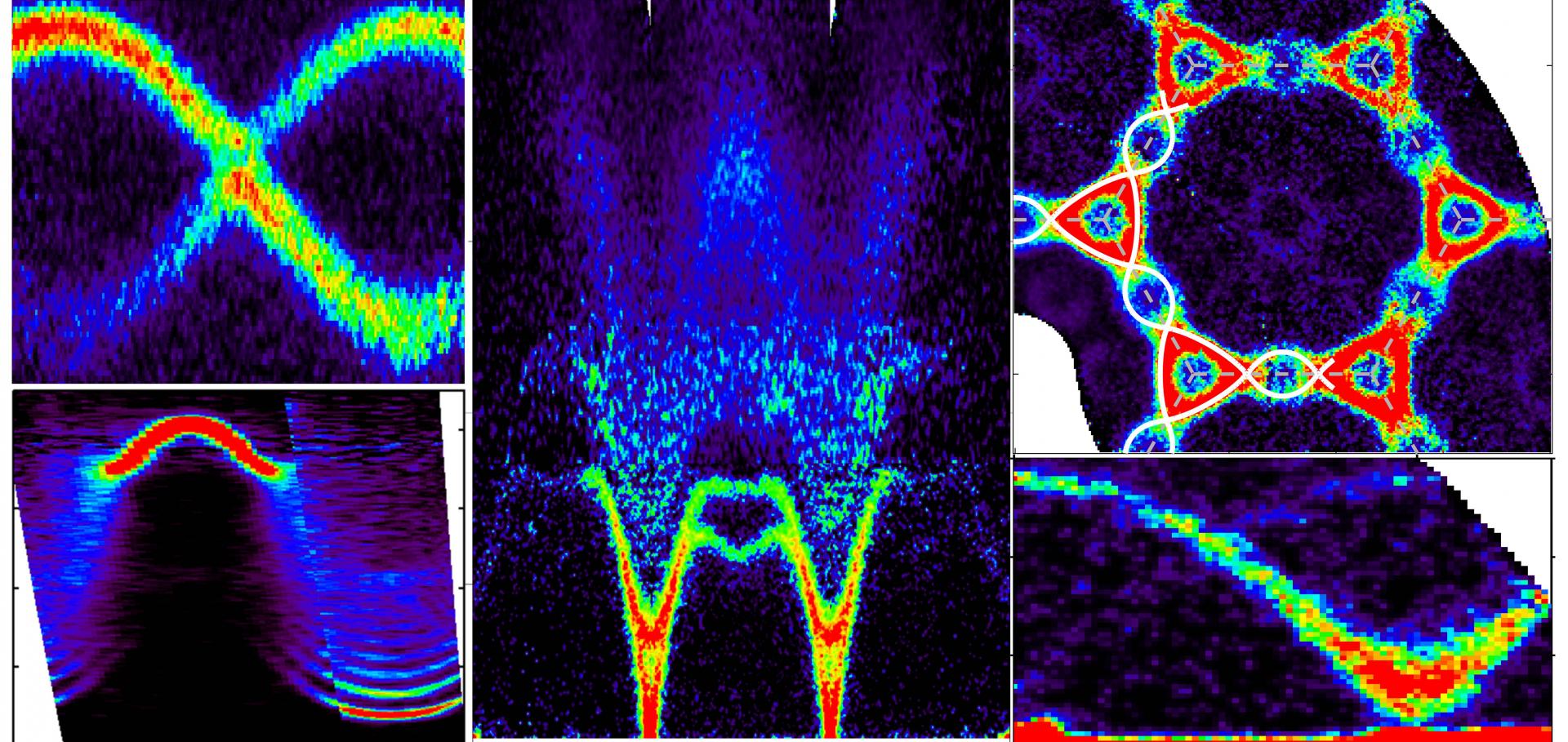Avoided quasiparticle decay and enhanced excitation continuum in the spin-1/2 near-Heisenberg triangular antiferromagnet Ba3CoSb2O9
Physical Review B: Condensed Matter and Materials Physics
Abstract:
We explore the magnetic excitations of the spin-1/2 triangular antiferromagnet Ba3CoSb2O9 in its 120 degree ordered phase using single-crystal high-resolution inelastic neutron scattering. Sharp magnons with no decay are observed throughout reciprocal space, with a strongly renormalized dispersion and multiple soft modes compared to linear spin wave theory. We propose an empirical parametrization that can quantitatively capture the complete dispersions in the three-dimensional Brillouin zone and explicitly show that the dispersion renormalizations have the direct consequence that one to two magnon decays are avoided throughout reciprocal space, whereas such decays would be allowed for the unrenormalized dispersions. At higher energies, we observe a very strong continuum of excitations with highly-structured intensity modulations extending up at least 4x the maximum one-magnon energy. The one-magnon intensities decrease much faster upon increasing energy than predicted by linear spin wave theory and the higher-energy continuum contains much more intensity than can be accounted for by a two-magnon cross-section, suggesting a significant transfer of spectral weight from the high-energy magnons into the higher-energy continuum states. We attribute the strong dispersion renormalizations and substantial transfer of spectral weight to continuum states to the effect of quantum fluctuations and interactions beyond the spin wave approximation, and make connections to theoretical approaches that might capture such effects. Finally, through measurements in a strong applied magnetic field, we find evidence for magnetic domains with opposite senses for the spin rotation in the 120 degree ordered ground state, as expected in the absence of Dzyaloshinskii-Moriya interactions, when the sense of spin rotation is selected via spontaneous symmetry breaking.Direct Observation of Charge Order in Triangular Metallic AgNiO2 by Single-Crystal Resonant X-Ray Scattering
PHYSICAL REVIEW LETTERS AMER PHYSICAL SOC 106 15
Abstract:
We report resonant x-ray scattering measurements on a single crystal of the orbitally degenerate triangular metallic antiferromagnet 2H-AgNiO2 to probe the spontaneous transition to a triple-cell superstructure at temperatures below T-S = 365 K. We observe a strong resonant enhancement of the supercell reflections through the Ni K edge. The empirically extracted K-edge shift between the crystallographically distinct Ni sites of 2.5(3) eV is much larger than the value expected from the shift in final states, and implies a core-level shift of similar to 1 eV, thus providing direct evidence for the onset of spontaneous honeycomb charge order in the triangular Ni layers. We also provide band-structure calculations that explain quantitatively the observed edge shifts in terms of changes in the Ni electronic energy levels due to charge order and hybridization with the surrounding oxygens.Glide symmetry breaking and Ising criticality in the quasi-1D magnet CoNb2O6
Proceedings of the National Academy of Sciences of USA National Academy of Sciences
Order-by-Disorder from Bond-Dependent Exchange and Intensity Signature of Nodal Quasiparticles in a Honeycomb Cobaltate
Nature Communications
Spin dynamics and field-induced magnetic phase transition in the honeycomb Kitaev magnet α-Li2IrO3
Physical review B: Condensed matter and materials physics American Physical Society


